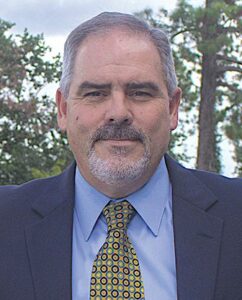 This edition offers two examples of a contrarian approach to success in the coal business. In both, one modern and one from the 1980s, savvy businessmen went against the grain. They saw opportunities where others did not. They believed in what they were doing, they bet everything on a hunch and they did not compromise on their principles.
This edition offers two examples of a contrarian approach to success in the coal business. In both, one modern and one from the 1980s, savvy businessmen went against the grain. They saw opportunities where others did not. They believed in what they were doing, they bet everything on a hunch and they did not compromise on their principles.
This month’s cover story casts a light on Iron Senergy. A little more than a year ago, Contura Energy announced it was selling its thermal assets in Pennsylvania to Iron Senergy, an unknown entity. The thermal assets consisted of the Cumberland longwall mine, the closed Emerald longwall mine, and the related assets and liabilities. The story details how looking at the property with a fresh set of eyes led to one of the most positive stories in the U.S. coal sector today.
Coal Age reached out to Iron Senergy at the time of the announcement and a couple of times throughout the last year, and they finally agreed to let us tell their story. They knew they had to turn things around quickly to save the Cumberland mine. Several things worked in their favor, an inspired workforce that got a new lease on life, customers who were willing to work with them, and community support. The Cumberland mine now expects to produce more than 6 million tons per year, the Emerald mine is being reclaimed, and soon the Greene Energy Center will take its place.
Southwestern Pennsylvania (Greene County in particular) is an area of high energy activity. Miners in the region produce coal from the Pittsburgh No. 8 seam, which can be used for electricity generation and steelmaking purposes. The area also hosts a tremendous amount of natural gas drilling operations. Iron Senergy’s vision for the future is built on an ESG (environmental, social and governance) platform that will provide energy-related jobs and knock-on economical benefits for the surrounding communities.
This edition also honors Mike Reilly (see People in the News, p. 11). He did something similar nearly 40 years ago. An executive with Zeigler coal, he persuaded Enron’s Kenneth Lay to sell the company to him and his management team. Reilly invested nearly all he had and Lay helped finance the sale of a non-core asset. They quickly paid down the debt and built the company into a major coal company in less than 10 years. Reilly also saw an opportunity where others did not.
After several years of tough sledding, the coal industry has a chance to remake itself. Growing energy demand and higher gas prices have opened the door and the industry will have to act quickly. Financing from traditional sources may no longer be available, so today’s energy entrepreneurs will have to employ a similar creative approach to build tomorrow’s coal companies.

